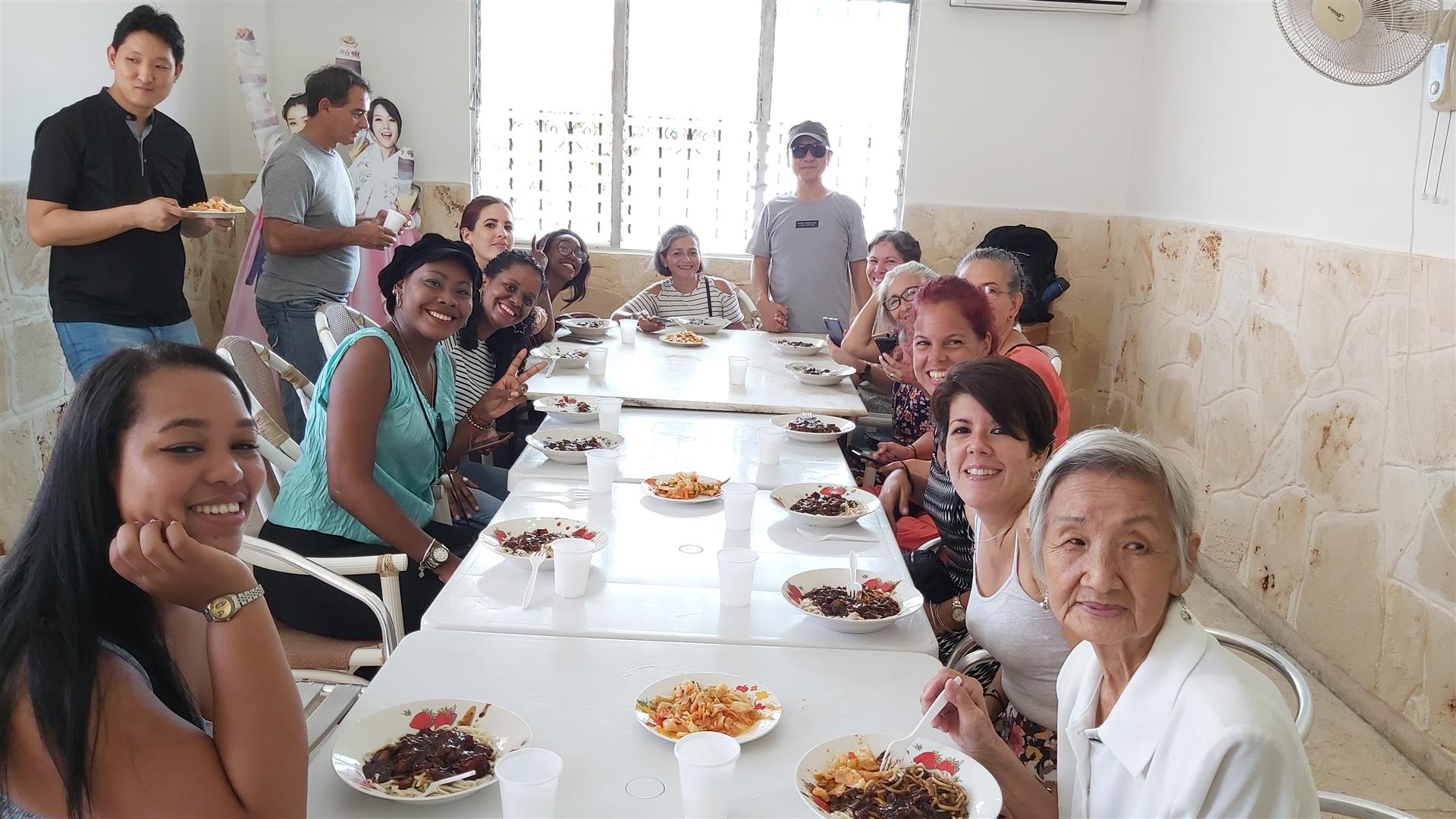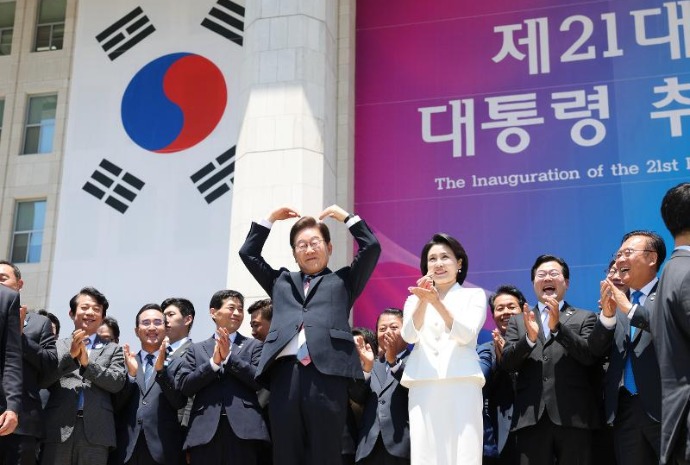- 한국어
- English
- 日本語
- 中文
- العربية
- Español
- Français
- Deutsch
- Pусский
- Tiếng Việt
- Indonesian
By Honorary Reporter Dayviana Diaz from Cuba
Photos = Dayviana Diaz
Martha Lim Kim, a retired university professor and the leader of the ethnic Korean community in Cuba, on Nov. 26 held a discussion on Korean customs and traditions with young people for the Cuba Ama Korea Club at the Korean Cultural Center and Korean School in Havana. The event's purpose was to share information on Korea to young aficionados of Korean culture.
Kim shared the history of her family and ethnic Koreans in Cuba, and the following are excerpts of a Q&A with her at the event.

Martha Lim Kim, a member of the third generation Korean Cubans, shares her experiences with the Cuba Ama Korea Club.
How did Korean immigrants reach Cuba?
Koreans mainly reached Cuba through the port of Manati in Las Tunas to escape poverty during World War I. They sought better living conditions given Cuba's prosperous economy at the time due to its sugar industry, being told that Cuban field laborers worked in suits and drank beer instead of water. After sugar prices started to nosedive in late 1920, however, many Koreans in Cuba suffered from destitution.
Select Korean immigrants were hired by the Manati Sugar Co., an American sugar monopoly that operated in Cuba from 1912-59 before the Cuban Revolution. Only few could find work on sugarcane fields because they were unfamiliar with such labor as they had worked on henequen fields in Mexico prior to their arrival in Cuba. My parents were among those who came from Mexico to Cuba through the company.
What traditions did Korean immigrants bring to Cuba from their motherland?
The Korean community was mainly low income and rural. Korean inhabitants in Matanzas often met in the town's gazebo, where elders talked about Korea and played traditional Korean music and board games. They also celebrated Christmas and Lunar New Year every year.
How did Koreans organize in Cuba?
They formed the Korean National Association in Matanzas in 1921 to protest the Japanese consul in Havana's declaration that Korean immigrants in Cuba were Japanese subjects based on Japanese rule of the Korean Peninsula (1910-45) at the time. The group also sought to help the most destitute Koreans and pay for their funerals. My father led a simple life and always saved money so that he could eventually return to Korea and get a vault to keep the remains of his family.
Today, Matanzas has 167 ethnic Koreans and Havana more than 300. The city with the largest ethnic Korean population is Cardenas.

The event concludes with participants served jjajangmyeon (black bean noodles) and kimchi.
Do younger descendants have a sense of Korean community like your generation did?
The sense of Korean identity isn't as strong in the younger generation. That's why we're so grateful to youth groups such as the Cuba Ama Korea Club for their help in preserving Korean identity in Cuba so that our traditions are not lost and Korean culture transcends our community.
kalhong617@korea.kr
*This article is written by a Korea.net Honorary Reporter. Our group of Honorary Reporters are from all around the world, and they share with Korea.net their love and passion for all things Korean.
